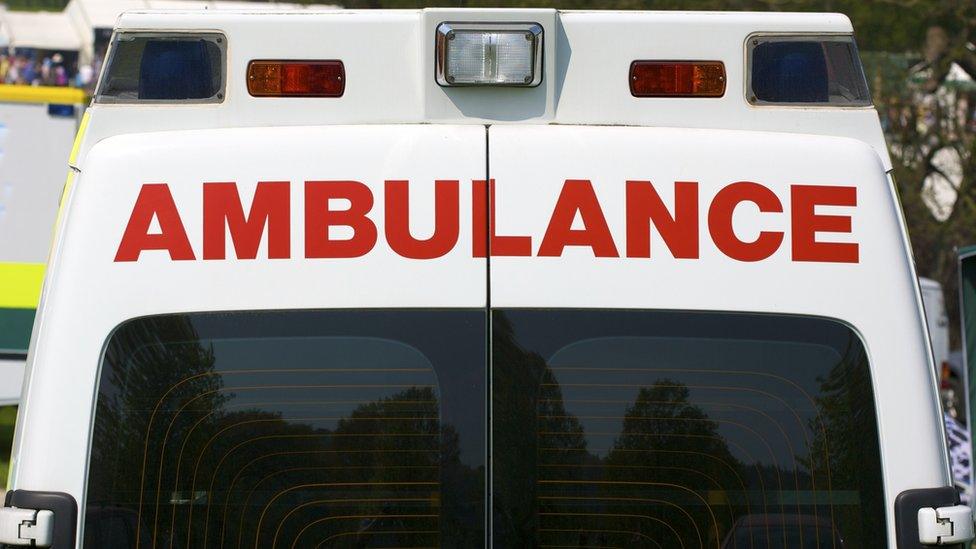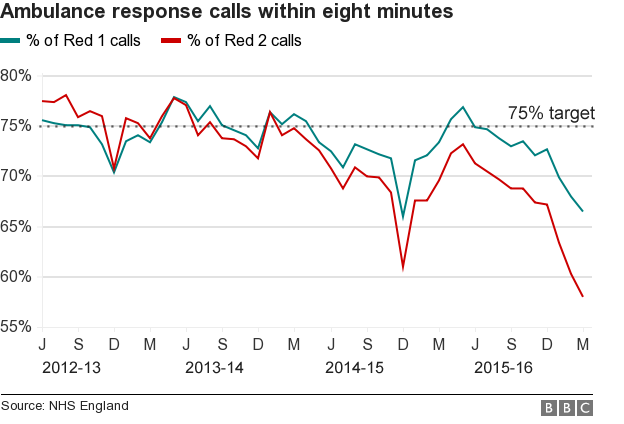Is the ambulance service in crisis?
- Published
- comments

It is perhaps one of the untold stories of the health service. While there has been acres of coverage of the junior doctors dispute, the rising waiting times in A&E and the money problems bedevilling the NHS, the plight of the ambulance service has slipped, by-and-large, under the radar.
But of all the parts of the NHS, it is arguably the one under the most strain and where delays have the greatest impact.
In England the ambulance service is meant to respond to the most critical calls - known as red one (cardiac arrests and where the patient is not breathing) and red two (other life-threatening situations) - within eight minutes.
But latest figures show that in March just 66.5% of red one calls and 58% of red two calls were dealt with in that time-frame, down from 73.4% and 69.6% respectively. To put that in context, the rate of deterioration outstrips every other area of the NHS.
It is now 11 months since the red one target was met, while you have to go back to January 2014 for the last time the red two target was achieved. Problems are also being experienced elsewhere in the UK.
It is no surprise that the Patients Association has described the performance as "unacceptable".

But this may be just the start of the problems. The three unions representing ambulance staff - GMB, Unite and Unison - are balloting members over industrial action on pay and grading.
They say this needs to be addressed because of the "huge recruitment and retention crisis" facing the service. Surveys by the unions suggest record numbers are leaving the profession.
Christina McAnea, head of health at Unison, says staff just do not feel their skills and hard work are being "recognised".
But this is not just union sabre-rattling. The regulator, the Care Quality Commission, is saying similar things as well.
At the end of last year the London ambulance was put into special measures with inspectors warning the large number of unfilled vacancies and slow response times were of particular concern.
And a report by the regulator earlier this month made a similar warning about East Midlands Ambulance Service, saying there were "insufficient staff" to respond to demand.
The ambulance service now deals with over 9m calls a year - double the number it received a decade ago. But as well as seeing more patients, ambulance crews are being asked to do more with them.
Some services treat as many as half their call outs at the scene. They have effectively become mini-treatment centres.
And when they do bring patients to hospital they are getting caught up in the A&E log jam. Ambulance crews can only get on their way when they have formally handed over patients to A&E staff, but there are reports this is becoming more difficult.
Handovers are meant to be done in 15 minutes from the ambulance arriving at A&E. Performance against this is not published, but I'm told non-compliance is now widespread.
Clearly ambulances stuck in queues outside a hospital cannot answer 999 calls. It is, in short, a vicious circle - and patients are paying the price.